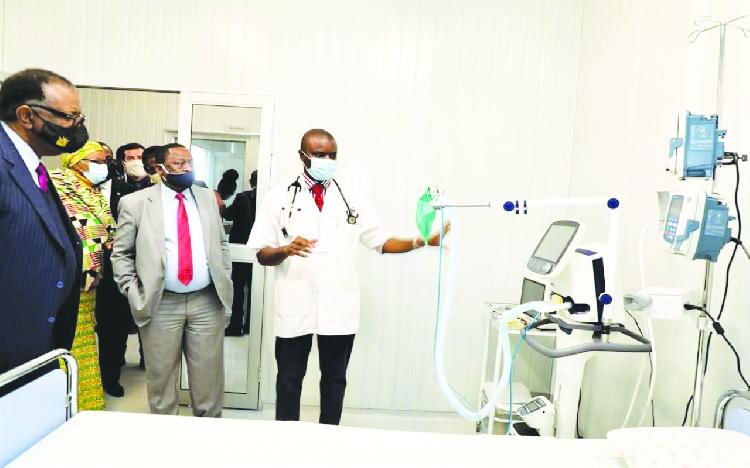Africa-Press – Namibia. THE third wave of Covid-19 infections in Namibia saw the entire country joining hands to help the government upgrade Namibia’s healthcare system.
During this time, the country reported 70 869 cases, and lost 2 579 Namibians to the virus, while executive director of health and social services Ben Nangombe said the country’s healthcare system was not prepared for the challenging circumstances.
Minister of health and social services Kalumbi Shangula says the third wave of infections created massive opportunities as healthcare facilities saw improvements in infrastructure.
“Additional admission blocks were constructed. Some wards were repurposed and converted into Covid-19 wards, and new medical equipment was bought and installed,” he says.
He says intensive care units (ICUs) were upgraded, and new ICU wards are currently being constructed in all the regions. “Local capacity was created to produce oxygen-generating systems, as well as coffins,” Shangula says.
He says new mortuaries in the form of refrigerated containers were procured and distributed to various hospitals. “Existing mortuaries were revamped and rendered functional,” he says.
The Ministry of Health and Social Services managed to increase bed capacity at different towns in the country ahead of and during the third wave, Shangula says.
At the last Covid-19 briefing, he said the ministry managed to increase the number of isolation beds, and has completed projects to establish prefabricated isolation units between June last year and September this year.
The capacity of these facilities, he said, ranges from four to 12 beds. Shangula at the briefing said Windhoek Central Hospital and Walvis Bay State Hospital received 24 additional beds each, while the Eenhana, Katima Mulilo, Mariental, and Keetmanshoop hospitals acquired 12 beds each.
Okongo, Rundu and Gobabis received eight hospital beds each, he said. Other facilities, including Opuwo and Oshakati, received four additional beds each.
Similar projects are currently underway at Okahao (12 beds), Andara (12 beds), Otjiwarongo (12 beds), Okahandja (12 beds), and Karasburg (eight beds).
These facilities are expected to be completed and commissioned soon, the minister said. The former tuberculosis ward at the Katutura Intermediate Hospital is being extended to cater for an additional 96 Covid-19 beds.
The ministry is currently in the process of evaluating bids to recommend a contractor for the project. Shangula said all these public healthcare facilities had only a total of 18 ICU beds in 2019. Before Covid-19, the number of ICU beds nationwide was severely limited, he said.
“The creation of additional ICU capacity will go a long way towards the realisation of our objectives of further strengthening services in the areas of surgery, obstetrics, and anaesthesia,” he said.
The government, however, in September announced that it has also funded the repurposing of a unit within the Keetmanshoop State Hospital to create a 15-bed ICU.
Similarly, a unit within the Katima Mulilo State Hospital will be converted to serve as a 10-bed ICU. The procurement process for the repurposing of the said facility is underway, Shangula said.
“Other district hospitals around the country also have limited ICU capacity. We have taken a conscious decision to capacitate district hospitals to be able to provide the appropriate ICU services,” he said.
The ministry will set up ICUs at Outapi, Otjiwarongo, Rundu, Gobabis, Mariental, Engela, Opuwo, and Nankudu in the Kavango West region. The ICU capacity of these hospitals would range from 10 to 15 beds per hospital, the minister said.
Shangula said the third Covid-19 wave differed from the first two in terms of geographical spread, intensity of transmission, and virulence. “The third wave created additional demand. It created opportunities that may have existed, but were not recognised. The demand for admission beds by far outstripped the supply thereof.
“Bed occupancy increased tenfold,” he said. The minister said additional demands were created for oxygen, mortuary space, and coffins.
“This was unprecedented. Patients were managed in makeshift structures, ambulances, and homes as hospital beds were full,” he said.
The country’s demand for oxygen became acute during the third wave, he said, and oxygen had to be imported from South Africa. The ministry filled vacant posts to match the growing demand for specialised services, Shangula said.
“The collaboration between public and private sectors became elevated.
“As much as Covid-19 has been and continues to be a major public health threat, it has brought about unintended opportunities,” he said.
For More News And Analysis About Namibia Follow Africa-Press






